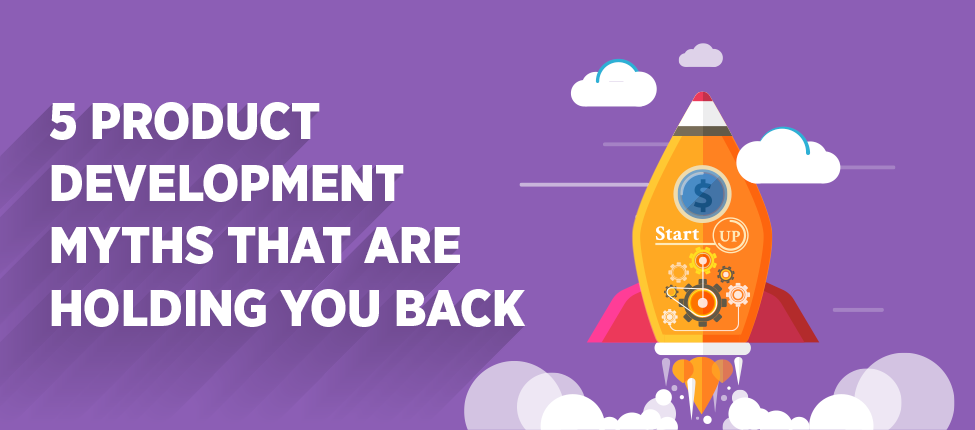5 Product Development Myths That Are Holding You Back

No one can ever say product development is an easy task. There are unbelievably tight deadlines to keep, limited resources, and bosses or clients who want your deliverables now to appease. Naturally, this means product development managers have to find places to cut costs, find ways to speed the process, and try to follow a regular production schedule. That may be a good model for a factory, but the process of product development is something altogether different.
Manufacturing requires a sort of assembly line mentality, where certain repetitive tasks are performed in sequence to produce a finished project. Developing a product has nowhere near that amount of order. There are some steps in the process only one member of the team might be able to perform. Or the steps might change completely as a better way is found or some inefficient parts are discarded. While the development of computer-aided design has made matters immeasurably easier, product development managers may still feel themselves held back by certain myths and misconceptions.
Hardware Development Costs Too Much
It's easy to fall into this trap. After all, hardware requires materials, and software just needs the computers on which you develop it, right? The fact of the matter is that both need computers, and tools, and engineers, and development time, and money for various expenditures. It's not easy for someone just getting started to pull those things out of thin air.
Hardware is going to cost more than software, but there are ways to cut the costs so that even a new entrepreneur can develop something and get it to market without breaking the bank. For instance, when you're building prototypes, do you really need to create everything perfectly? To test a feature or process, just build what you really need instead of the whole thing every time.
When you hire an engineering team, look for one that will allow you to pay them a fixed price or has more flexible billing than an hourly rate. That way you're paying for work done, rather than time spent that may or may not have been productive.
Suppliers Only Work With Established Companies
You're going to need to get the raw materials and the services you can't provide from somewhere, and the best place to get them is from tried and true suppliers who have done successful work with other companies before. The important part is not to have large holdings, massive production, and a pile of cash, but to make something that people will want to use. If a supplier sees profit in what you have to offer, they'll get right on board.
If you're a new entrepreneur, you should understand that networking is your best friend. Ask people who have started out like you're starting right now and see who they used. Not only will suppliers work for you, but you'll probably have a choice of which one is the best for you. Don't just go for the first name you find. You may end up with a great supplier who is above and beyond what you ever dreamed -- just be sure you're ready with customer and client testimonials, a business plan, data, or whatever else you need to convince them you're worth their time.
More Features Mean More Quality
More likely than not, you develop a product to solve a problem or to make a certain task or process easier. Once you've got that goal down, take a look at what you have and consider stopping there. Adding features at this point may make something elegantly simple into something overly cluttered or complicated, not to mention that adding unnecessary features also adds unnecessary costs. Unneeded features can stretch your budget to the breaking point for no good reason.
Larger Batches Are More Economical
Imagine you're developing a product and you make a bunch of prototypes only to find many more flaws than you ever anticipated at test time. That's a lot of money you've just lost. This is especially true if you're developing something complex. Even if you're making something relatively simple, it's better to test a small number of prototypes one step at a time to catch and fix any flaws before they become big problems.
Busier is Better
It certainly looks productive when everyone is busily at work trying to accomplish several projects at a time. If you have resources, you're certainly going to want to get your money's worth out of them. Unfortunately, people don't really work that way. Moving from task to task and project to project to keep up with multiple deadlines does not increase efficiency. Changing momentum to shift to another goal takes more energy than simply taking one project fully to completion. If there are too many things going on at once, you'll end up with a tangled mess instead of a well-honed process.
Getting a product from idea to a tangible, salable item can be a complex, and sometimes frustrating, process. But it can also be highly rewarding in more ways than one if you're willing to take a step back and look at the project as a whole. So, don't let some common misconceptions hold you back.
